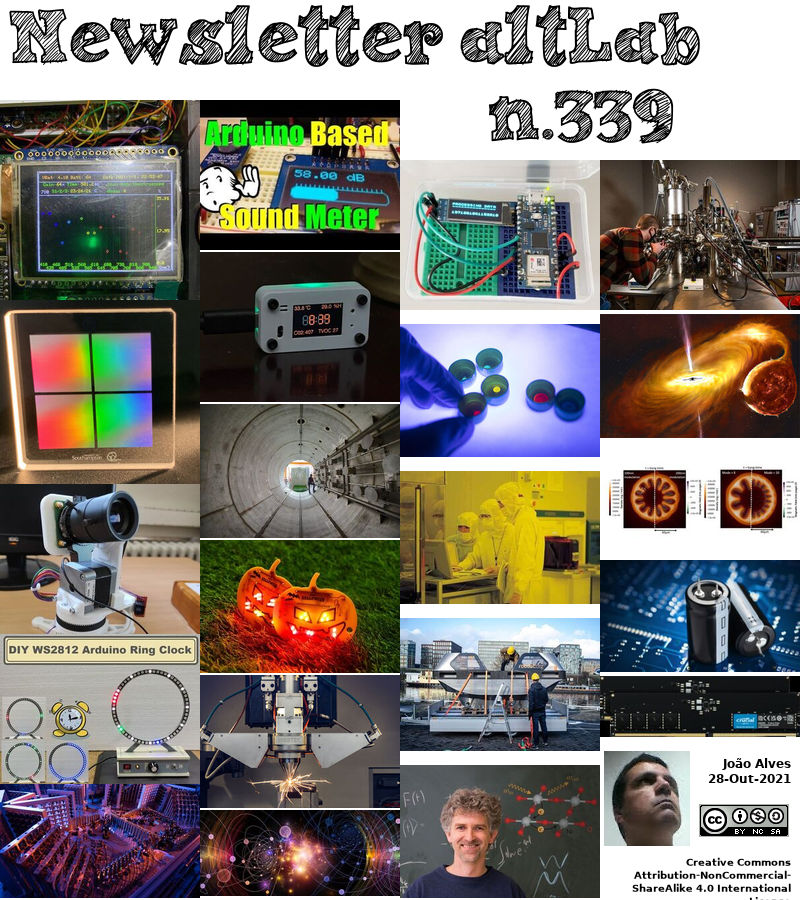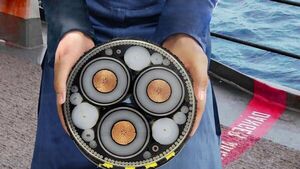2021-10-28 - Nº 339
Editorial
Esta é a Newsletter Nº 339 que se apresenta com o mesmo formato que as anteriores. Se gostar da Newsletter partilhe-a!
Todas as Newsletters encontram-se indexadas no link.
Esta Newsletter tem os seguintes tópicos:
Faz hoje anos que nascia, em 1845, o físico polaco Zygmunt Florenty von Wroblewski. Ele liquefez os "gases permanentes" tais como azoto e monóxido de carbono em maiores quantidades do que as anteriormente realizadas por Cailletet, cujo método ele melhorou. Em 1883, ele conseguiu a liquefacção estática do oxigénio e do ar. Foi o primeiro a liquefazer o hidrogénio. Embora o tenha conseguido apenas numa névoa fina transitória, publicou (1885) dados notavelmente precisos: temperatura crítica 33 K, pressão crítica, 13,3 atm e ponto de ebulição, 23 K (valores modernos 33,3 K, 12,8 atm, 20,3 K).
Faz também hoje anos que nascia, em 1914, o bioquímico britânico Richard Synge. Ele partilhou o Prémio Nobel da Química de 1952 com A.J.P. Martin pelo seu desenvolvimento da cromatografia de partição, nomeadamente a cromatografia em papel. Alguns dos avanços da química necessitam de novos métodos para a separação de várias substâncias. Na cromatografia de papel-filtro, uma gota de uma mistura de substâncias é deixada cair sobre uma tira de papel-filtro, que é autorizada a elaborar um solvente adequado (ex. água com álcool butílico), por acção capilar. A mancha começa a mover-se e, em seguida, gradualmente segrega-se em vários pontos. Algumas manchas seguem rapidamente o solvente, enquanto outras ficam para trás. O resultado é uma resolução da mistura em partes componentes. Uma gota de misturas extremamente complicadas pode ser analisada desta forma simples.
Faz igualmente hoje anos que nascia, em 1937, o engenheiro electrotécnico americano Marcian Hoff. Ele concebeu o 4004, o primeiro microprocessador comercial do mundo, adaptando a tecnologia de circuito integrado (CI) existente para combinar funções de memória, aritmética e lógica como um computador num único chip de silício. Liderou o projecto na Intel, em conjunto com Stanley Mazor, Masatoshi Shima e Federico Faggin. O 4004 tinha uma ROM de 256 bytes, uma RAM de 32 bits, um registo de deslocamento de 10 bits (uma forma de RAM) e um microprocessador de 4 bits. Tudo num total de 2300 transístores num pacote de 16 pinos. Porque, como um chip, substituiu vários circuitos integrados com fios numa calculadora programável, o 4004 revolucionou a indústria electrónica. Quando lançado em Novembro de 1971, o 4004 tornou possível incluir o processamento de dados em centenas de dispositivos.
Por fim, faz hoje anos que nascia, em 1955, o magnata empresarial americano, investidor, autor, e filantropo Bill Gates. Ele foi co-fundador da Microsoft, juntamente com o seu amigo de infância Paul Allen. Durante a sua carreira na Microsoft, Gates ocupou os cargos de presidente, director executivo (CEO), presidente e arquitecto de software, sendo também o maior accionista individual até Maio de 2014. É considerado um dos empresários mais conhecidos da revolução dos microcomputadores dos anos 70 e 80.
Em 1886 era inaugurada a Estátua da Liberdade, um presente de amizade do povo francês para o povo dos Estados Unidos, é dedicada no porto de Nova Iorque pelo Presidente Grover Cleveland. Originalmente conhecida como "Liberty Enlightening the World", a estátua foi proposta pelo historiador francês Edouard de Laboulaye para comemorar a aliança franco-americana durante a Revolução Americana. Desenhada pelo escultor francês Frederic-Auguste Bartholdi, a estátua de 46 metros tem a forma de uma mulher com um braço erguido segurando uma tocha. A sua estrutura de gigantescos suportes de aço foi concebida por Eugene-Emmanuel Viollet-le-Duc e Alexandre-Gustave Eiffel, este último famoso pela sua concepção da Torre Eiffel em Paris.
Nesta semana que passou, a fundação Raspberry PI anunciou uma nova placa a Raspberry Pi Zero 2 W. Esta é lançada seis anos após o lançamento da primeira placa Zero. Usando o mesmo form-factor esta placa usa o mesmo processador do Raspberry PI 3 - o Broadcom BCM2710A1 SoC. Vem equipada com 512MB de memória, 2.4GHz IEEE 802.11b/g/n wireless LAN, Bluetooth 4.2, BLE e é lançada a um preço de 15 USD. Este preço reflecte não só as melhorias que a placa introduz relativamente à anterior Zero mas também é fruto das condicionantes que atualmente se sentem no mercado de componentes.
Na Newsletter desta semana apresentamos diversas noticias, artigos científicos, projetos de maker assim como alguns videos interessantes. É apresentada a revista MagPi nº111 de Novembro.
 João Alves ([email protected])
João Alves ([email protected])
O conteúdo da Newsletter encontra-se sob a licença  Creative Commons Attribution-NonCommercial-ShareAlike 4.0 International License.
Creative Commons Attribution-NonCommercial-ShareAlike 4.0 International License.
Novidades da Semana
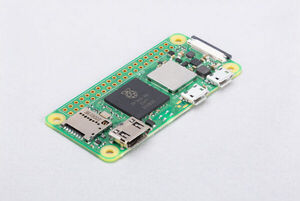
New product: Raspberry Pi Zero 2 W on sale now at $15
"It’s been nearly six years since we unleashed the $5 Raspberry Pi Zero on an unsuspecting world. Of all the products we’ve launched, Zero is still the one I’m proudest of: it most perfectly embodies our mission to give people access to tools, and to eliminate cost as a barrier. We’ve sold nearly four million units of Zero, and its $10 wireless-enabled big brother Zero W, and they’ve made their way into everything from smart speakers to hospital ventilators. But where our larger products have grown steadily more powerful over the years, we’ve never found a way to pack more performance into the Zero form factor. Raspberry Pi Zero 2 W Priced at $15, Raspberry Pi Zero 2 W uses the same Broadcom BCM2710A1 SoC die as the launch version of Raspberry Pi 3, with Arm cores slightly down-clocked to 1GHz, bundled into a single space-saving package alongside 512MB of LPDDR2 SDRAM. The exact performance uplift over Zero varies across workloads, but for multi-threaded sysbench it is almost exactly five times faster." [...]
Outras Notícias
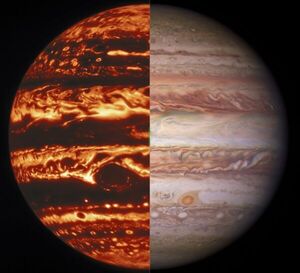
NASA’s Juno: Science Results Offer First 3D View of Jupiter Atmosphere
"New findings from NASA’s Juno probe orbiting Jupiter provide a fuller picture of how the planet’s distinctive and colorful atmospheric features offer clues about the unseen processes below its clouds. The results highlight the inner workings of the belts and zones of clouds encircling Jupiter, as well as its polar cyclones and even the Great Red Spot. Researchers published several papers on Juno’s atmospheric discoveries today in the journal Science and the Journal of Geophysical Research: Planets. Additional papers appeared in two recent issues of Geophysical Research Letters. “These new observations from Juno open up a treasure chest of new information about Jupiter’s enigmatic observable features,” said Lori Glaze, director of NASA’s Planetary Science Division at the agency’s headquarters in Washington. “Each paper sheds light on different aspects of the planet’s atmospheric processes – a wonderful example of how our internationally-diverse science teams strengthen understanding of our solar system.” Juno entered Jupiter’s orbit in 2016." [...]
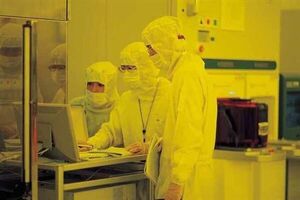
TSMC intros N4P process
"TSMC has introduced its N4P process, a performance-focused enhancement of the foundry's 5nm technology platform. As the third major enhancement of TSMC's 5nm family, N4P will deliver an 11% performance boost over the original N5 technology and a 6% boost over N4, the company indicated. Compared to N5, N4P will also deliver a 22% improvement in power efficiency as well as a 6% improvement in transistor density. In addition, N4P lowers process complexity and improves wafer cycle time by reducing the number of masks, TSMC disclosed. TSMC's N4P process was designed for an easy migration of 5nm platform-based products, which enables customers to not only better maximize their investment but will also deliver faster and more power efficient refreshes to their N5 products, the foundry noted. N4P designs will be well-supported by TSMC's comprehensive design ecosystem for silicon IP and EDA." [...]

Alaska Air Group Collaborating with ZeroAvia to Develop Hydrogen Powertrain for 76-Seat Zero-Emission Aircraft
"ZeroAvia is gaining altitude as the leader in zero-emission passenger aircraft as it announces a development collaboration with Alaska Air Group, the parent company of Alaska Airlines, for a hydrogen-electric powertrain capable of flying 76-seat regional aircraft in excess of 500 NM. Alaska is also joining the list of top investors for the company, alongside a fellow Seattle-based Amazon Climate Pledge Fund and Bill Gates's Breakthrough Energy Ventures. "Alaska is committed to creating a sustainable future for aviation, working on all aspects of a five-part path toward our goal of net zero by 2040," said Diana Birkett Rakow, vice president of public affairs and sustainability for Alaska Airlines. "We are honored to partner with ZeroAvia's innovative and forward-thinking team, to support their progress developing zero-emissions aviation, and to collaborate for real-world hydrogen aviation success." Alaska and ZeroAvia engineers will work together to scale the company's existing powertrain platform to produce the ZA2000, an engine family capable of producing between 2,000 and 5,000 kilowatts of power with a 500-mile range. The partnership will initially deploy ZeroAvia's hydrogen-electric propulsion technology into a full-size De Havilland Q400 aircraft, previously operated by Alaska Air Group subsidiary Horizon Air Industries, Inc., capable of transporting 76 passengers." [...]
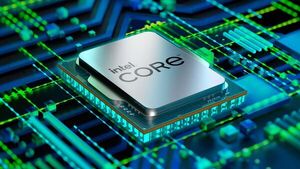
Intel Unveils 12th Gen Intel Core, Launches World’s Best Gaming Processor, i9-12900K
"Today at Intel Innovation, Intel unveiled the 12th Gen Intel® Core™ processor family with the launch of six new unlocked desktop processors, including the world’s best gaming processor, the 12th Gen Intel Core i9-12900K. With a max turbo boost of up to 5.2 GHz and as many as 16 cores and 24 threads, the new desktop processors reach new heights of multi-threaded performance for enthusiast gamers and professional creators. The full 12th Gen Intel Core family will include 60 processors, set to power more than 500 designs from a broad set of partners. As detailed during Intel Architecture Day 2021, the new performance hybrid architecture, the first built on Intel 7 process, delivers scalable performance from 9 to 125 watts to enable every PC segment from ultra-thin-and-light laptops to enthusiast desktops and out to the edge. MORE: Press Kits: Intel Innovation 2021 | 12th Gen Intel Core … Product Briefs: 12th Gen Intel Core Desktop Processors | The Intel Z690 Chipset with Unlocked 12th Gen Intel Core Desktop Processors ... Webcast: Intel Innovation Keynote … News Release: Intel Innovation Spotlights New Products, Technology and Tools for Developers … Intel Innovation Topic News: Developer/oneAPI | Ubiquitous Computing | Artificial Intelligence | Cloud-to-Edge Infrastructure | Pervasive Connectivity “The performance hybrid architecture of 12th Gen Intel Core processors is an architectural shift made possible by close co-engineering of software and hardware that will deliver new levels of leadership performance for generations,” said Gregory Bryant, Intel executive vice president and general manager of the Client Computing Group. “This begins with the arrival of our flagship Core i9-12900K – the world’s best gaming processor – and you will see even more incredible experiences as we ship the rest of the 12th Gen family and beyond.” Game, Create and Overclock with Unlocked 12th Gen Desktop Processors The six unlocked desktop processors launched today are the first based on Intel’s performance hybrid architecture featuring a combination of Performance-cores (P-cores), the highest performing CPU core Intel has built, and Efficient-cores (E-cores), designed for scalable multi-threaded workload performance." [...]

STMicroelectronics’ Automotive-Qualified Navigation Module with Dead Reckoning Simplifies Design and Boosts Performance
"To support the positioning market with state-of-the-art GNSS chipset and modules, STMicroelectronics has introduced the Teseo-VIC3DA, the latest member of the Teseo module family. Teseo-VIC3DA combines ST’s high-performing Automotive Teseo III GNSS1 IC with the automotive 6-axis MEMS inertial measurement unit (IMU) and dead reckoning software to create a convenient, automotive-qualified navigation module. Leveraging ST’s in-house manufacturing and software-development competencies, the Teseo-VIC3DA module enables competitively priced in-car navigation, fleet-management, and insurance-monitoring applications. The automotive Teseo III GNSS IC at the heart of the system is proven in high-end systems and is already highly regarded for its accuracy and efficiency. With multi-constellation awareness, Teseo III offers robust positioning capabilities by simultaneously receiving signals from GPS, Galileo, GLONASS, BeiDou, and QZSS constellations. The ST 6-axis automotive-grade MEMS IC introduces super-high-resolution motion tracking in advanced vehicle navigation and telematics applications." [...]

Renesas and wolfSSL Enable Ready-to-Use IoT Security Solutions Based on Embedded TLS Stack
"All Renesas 32-bit RA Family, RX Family, and Synergy Platform MCU Customers Can Obtain a Free, wolfSSL Standard Commercial License for Their TLS Stack with wolfCrypt Cryptographic Library Renesas Electronics Corporation (TSE:6723), a premier supplier of advanced semiconductor solutions, and wolfSSL, a leading provider of embedded security solutions, today announced a multi-year licensing agreement whereby customers of Renesas’ 32-bit MCU offerings can obtain a free commercial license for the wolfSSL TLS (Transport Layer Security) stack with integrated Renesas hardware security engine support plus the FIPS certified wolfCrypt crypto library. All customers of Renesas RA Family, RX Family, and Synergy Platform MCUs are eligible for the commercial license, which includes technical support from wolfSSL. TLS is the world-wide standard for securing internet communications. A TLS solution built on certified, integrated hardware security engines such as the Renesas TSIP (Trusted Secure IP) and SCE (Secure Crypto Engine) provides the ultimate mechanism to create secure IoT products. The wolfSSL embedded TLS stack is a lightweight TLS solution written in ANSI C and targeted for embedded, RTOS, and resource-constrained environments - primarily because of its small size, speed, and feature set. wolfSSL supports industry standards up to the current TLS 1.3 and DTLS 1.2 levels, and is up to 20 times smaller than OpenSSL." [...]

Micron’s New Crucial DDR5 Memory Delivers Blazing Speeds and Massive Bandwidth to Consumers for Next-Gen Desktop PCs
"Micron Technology, Inc. (Nasdaq: MU), today announced the immediate availability of Micron Crucial DDR5 desktop PC memory products that deliver up to 50% faster data transfer speeds over previous-generation DDR4 memory, providing mainstream PC users with enthusiast-level performance.7 Whether a PC is used for business, learning, creativity, interactive entertainment or personal use, the computing experience is defined by performance, flexibility and efficiency. Micron’s DDR5 memory technology advancements offer higher bandwidth per core, nearly doubling the effective memory bandwidth8 to provide multi-core CPUs with the data they need for multi-tasking and other demanding PC applications. “Micron has long been at the forefront of defining the PC industry’s DDR5 specifications, leading the charge for this groundbreaking technology and enabling the industry’s transition by offering the DDR5 Technology Enablement Program (TEP),” said Malcolm Humphrey, vice president and general manager of Micron’s Compute DRAM Product organization. “Through our DDR5 TEP, we have accelerated ecosystem access to Micron’s industry-leading product design, development, system integration and testing to maximize DDR5 performance for customers.” DDR5 allows for better power efficiency, decreasing operating voltage to 1.1 volts. Plus, its unique features enable future chip density to grow from today’s 16Gb up to 24Gb, 32Gb and beyond, quadrupling the module density of DDR5 over DDR4 DRAM. This provides headroom and future scalability for DDR5-enabled systems." [...]
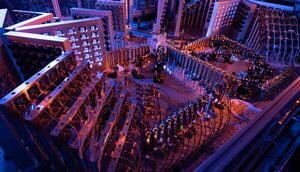
Chinese scientists develop new quantum computer with 113 detected photons
"Chinese scientists have established a quantum computer prototype named "Jiuzhang 2.0" with 113 detected photons, achieving major breakthroughs in quantum computational speedup. In the study, Gaussian boson sampling (GBS), a classical simulation algorithm, was used to provide a highly efficient way of demonstrating quantum computational speedup in solving some well-defined tasks. With 113 detected photons, "Jiuzhang 2.0" can implement large-scale GBS septillion times faster than the world's fastest existing supercomputer and 10 billion times faster than its earlier version, "Jiuzhang." In a nutshell, it would take the fastest supercomputer about 30 trillion years to solve a problem that "Jiuzhang 2.0" can solve in just one millisecond. The study, led by the renowned Chinese quantum physicist Pan Jianwei, was published online in the journal Physical Review Letters on Monday Beijing Time. Inspired by the concept of light amplification by stimulated emission of radiation (LASER), the team developed a stimulated squeezed light source with high brightness and simultaneously near-unity purity and efficiency for scalable GBS." [...]
Ciência e Tecnologia
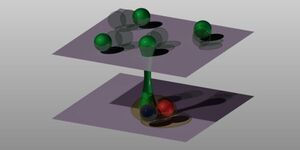
Electrical control over designer quantum materials
"In the past few years, suitably engineered stacks of two-dimensional materials have emerged as a powerful platform for studying quantum correlations between electronic states. ETH physicists now demonstrate how key properties of such systems can be conveniently tuned by changing an applied electrical field. Exploring the properties and behaviours of strongly interacting quantum particles is one of the frontiers of modern physics. Not only are there major open problems that await solutions, some of them since decades (think high-temperature superconductivity). Equally important, there are various regimes of quantum many-body physics that remain essentially inaccessible with current analytical and numerical tools. For these cases in particular, experimental platforms are sought after in which the interactions between particles can be both controlled and tuned, thus allowing the systematic exploration of wide parameter ranges." [...]
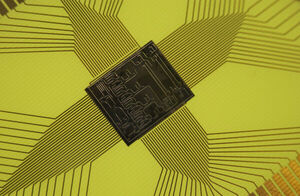
ITMO Researchers Generate Laser Radiation in Anapole Modes
"ITMO University researchers in collaboration with scientists from the Australian National University and Korea University have demonstrated the generation of laser radiation in anapole states (modes) for the first time. In the future, this might help develop compact sources of laser radiation such as lab-on-a-chip devices. What are anapole states Apart from dipole, magnetic, quadrupole, and higher-order electric current configurations, Soviet physicist Yakov Zeldovich proposed investigating toroidal electric current configurations about fifty years ago. Torus is a geometric shape made by rotating a circle around an axis that is coplanar with it but does not cross it. The simplest way to imagine a torus is to think of it as a donut. “A magnetic field will circulate inside a coil formed by twisting a wire around a torus." [...]
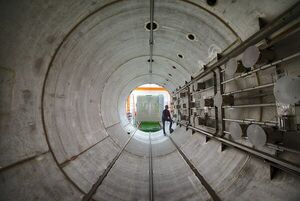
New era of physics uncovered by Neutrino experiment’s first results
"A major new physics experiment has used four complementary analyses to show no signs of a theorised fourth kind of neutrino known as the sterile neutrino. Its existence is considered a possible explanation for anomalies seen in previous physics experiments. New results from the MicroBooNE experiment at the U.S. Department of Energy’s Fermi National Accelerator Laboratory deal a blow to a theoretical particle known as the sterile neutrino. For more than two decades, this proposed fourth neutrino has remained a promising explanation for anomalies seen in earlier physics experiments. Finding a new particle would be a major discovery and a radical shift in our understanding of the universe. However, four complementary analyses released by the international MicroBooNE collaboration and presented during a seminar today all show the same thing: no sign of the sterile neutrino." [...]

Chip-Based Quantum Microcomb Creates Entanglement Between Optical Fields
"Researchers have developed a tiny optical frequency comb, or microcomb, that uses two-mode squeezing to create unconditional entanglement between continuous optical fields. The miniature chip-based device lays the groundwork for mass production of deterministic quantum frequency combs that could be used for quantum computing, quantum metrology and quantum sensing. Zijiao Yang from the University of Virginia, USA will present the research at the Frontiers in Optics + Laser Science Conference (FiO LS) all-virtual meeting, 01 – 04 November 2021. Yang’s presentation is scheduled for Tuesday, 02 November at 08:30 EDT (UTC – 04:00). The new microcomb is designed for quantum information protocols based on continuous-variable entangled states which generates entangled states, or qumodes, for entire optical fields rather than single photons. There is great interest in this protocol because, unlike qubit-based methods, there is no requirement for single photons or special optical modulation." [...]

One autonomous taxi, please
"Self-driving Roboats, developed at MIT, set sea in Amsterdam canals. If you don’t get seasick, an autonomous boat might be the right mode of transportation for you. Scientists from MIT’s Computer Science and Artificial Intelligence Laboratory (CSAIL) and the Senseable City Laboratory, together with Amsterdam Institute for Advanced Metropolitan Solutions (AMS Institute) in the Netherlands, have now created the final project in their self-navigating trilogy: a full-scale, fully autonomous robotic boat that’s ready to be deployed along the canals of Amsterdam. “Roboat” has come a long way since the team first started prototyping small vessels in the MIT pool in late 2015. Last year, the team released their half-scale, medium model that was 2 meters long and demonstrated promising navigational prowess. This year, two full-scale Roboats were launched, proving more than just proof-of-concept: these craft can comfortably carry up to five people, collect waste, deliver goods, and provide on-demand infrastructure." [...]
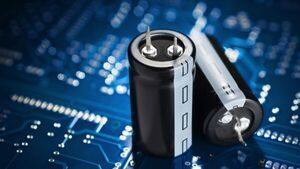
New Curtin study solves energy storage and supply puzzle
"Curtin University research has found a simple and affordable method to determine which chemicals and types of metals are best used to store and supply energy, in a breakthrough for any battery-run devices and technologies reliant on the fast and reliable supply of electricity, including smart phones and tablets. Lead author Associate Professor Simone Ciampi from Curtin’s School of Molecular and Life Sciences said this easy, low-cost method of determining how to produce and retain the highest energy charge in a capacitor, could be of great benefit to all scientists, engineers and start-ups looking to solve the energy storage challenges of the future. “All electronic devices require an energy source. While a battery needs to be recharged over time, a capacitor can be charged instantaneously because it stores energy by separating charged ions, found in ionic liquids,” Associate Professor Ciampi said. “There are thousands of types of ionic liquids, a type of “liquid salt”, and until now, it was difficult to know which would be best suited for use in a capacitor. What our team has done is devise a quick and easy test, able to be performed in a basic lab, which can measure both the ability to store charge when a solid electrode touches a given ionic liquid – a simple capacitor – as well as the stability of the device when it’s charged." [...]
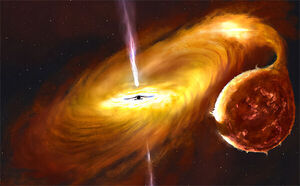
Amateur astronomers help discovery of a warped disc around a black hole in Milky Way
"An international team of astrophysicists from South Africa, the UK, France and the US have found large variations in the brightness of light seen from around one of the closest black holes in our Galaxy, 9,600 light-years from Earth, which they conclude is caused by a huge warp in its accretion disc. This object, MAXI J1820+070, erupted as a new X-ray transient in March 2018 and was discovered by a Japanese X-ray telescope onboard the International Space Station. These transients, systems that exhibit violent outbursts, are binary stars, consisting of a low-mass star, similar to our Sun and a much more compact object, which can be a white dwarf, neutron star or black hole. In this case, MAXI J1820+070 contains a black hole that is at least 8 times the mass of our Sun. The first findings have now been accepted for publication in the international highly ranked journal, Monthly Notices of the Royal Astronomical Society, whose lead author is Dr Jessymol Thomas, a Postdoctoral Research Fellow at the South African Astronomical Observatory (SAAO). The discovery presented in the paper was made from an extensive and detailed light-curve obtained over almost a year by dedicated amateurs around the globe who are part of the AAVSO (American Association of Variable Star Observers)." [...]
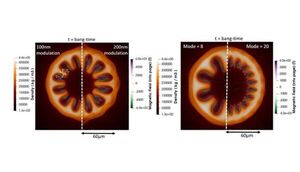
New research looks at process of magnetic flux generation in ICF implosions
"Lawrence Livermore National Laboratory (LLNL) researchers now have a better understanding on how strong the magnetic fields are in an inertial confinement fusion (ICF) implosion at the National Ignition Facility (NIF), the world’s most energetic laser. The researchers described their findings a paper published in Physics of Plasmas with LLNL scientists Chris Walsh serving as lead author and Dan Clark as co-author. The primary findings in the paper show that researchers can expect bigger field strengths for hotter implosions, implosions with bigger asymmetries and implosions with short wavelength asymmetries. Walsh explains that the process of magnetic field generation in the ICF experiments — the so-called Biermann battery effect — is the same process that was the seed for magnetic fields throughout the universe. “These seed magnetic fields are then amplified by dynamo effects to give us the magnetic field strengths we observe in the universe today,” Walsh said. “The expected magnetic field strengths in our NIF implosions (10,000T) are 200 million times larger than the magnetic field on the surface of the Earth.” The fields also are 100 million times larger than the sun’s magnetic field strength." [...]
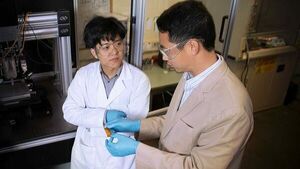
A new 3D printing frontier: Self-powered wearable devices
"When most people think of wearable devices, they think of smart watches, smart glasses, fitness trackers, even smart clothing. These devices, part of a fast-growing market, have two things in common: They all need an external power source, and they all require exacting manufacturing processes. Until now. Yanliang Zhang, associate professor of aerospace and mechanical engineering at the University of Notre Dame, and doctoral student Yipu Du have created an innovative hybrid printing method — combining multi-material aerosol jet printing and extrusion printing — that integrates both functional and structural materials into a single streamlined printing platform. Their work was recently published in Nano Energy. Zhang and Du, in collaboration with a team at Purdue University led by professor Wenzhuo Wu, also have developed an all-printed piezoelectric (self-powered) wearable device." [...]

Making the strange metal state in high temperature superconductors even stranger
"Researchers from Chalmers University of Technology, Sweden, have uncovered a striking new behavior of the ‘strange metal’ state of high temperature superconductors. The discovery represents an important piece of the puzzle for understanding these materials, and the findings have been published in the highly prestigious journal Science. Superconductivity, where an electric current is transported without any losses, holds enormous potential for green technologies. For example, if it could be made to work at high enough temperatures, it could allow for lossless transport of renewable energy over great distances. Investigating this phenomenon is the aim of the research field of high temperature superconductivity. The current record stands at −130 degrees celsius, which might not seem like a high temperature, but it is when compared to standard superconductors which only work below −230 degrees celsius." [...]

Magnetic material 3D-printed from nonmagnetic powder
"Scientists from Skoltech and their colleagues have used a 3D printer to fuse two materials in an alloy whose composition continuously changes from one region of the sample to the other, endowing the alloy with gradient magnetic properties. Despite the nonmagnetic nature of the constituent materials, the alloy exhibits magnetic properties. Published in The Journal of Materials Processing Technology, the study also offers a theoretical explanation for the phenomenon. Once perceived as a mere novelty tool for rapid prototyping, 3D printing has grown into a full-blown industrial technology used to produce airplane parts, patient-matched implants and prosthetics, jewelry, and custom-fit shoes, among other things. The main advantage of 3D printing is the ability to produce objects with very complex shapes that are impossible or too expensive to make with conventional manufacturing techniques, such as casting, rolling, and stamping. The technology also enables faster and riskier prototyping, and greater flexibility in terms of product customization and how many items are produced." [...]
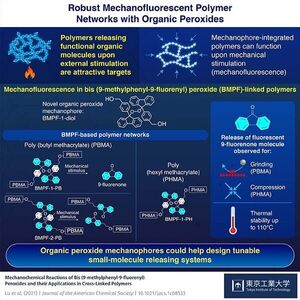
Novel Peroxide-based Material Emits Fluorescence in Response to Stress
"A new organic peroxide molecule, BMPF, prepared by scientists at Tokyo Institute of Technology (Tokyo Tech), releases fluorescence under mechanical stress and could be incorporated into polymer networks for mechanofunctional design. BMPF-linked polymers are also stable at relatively high temperatures and could pave the way for highly selective and efficient small-molecule-releasing systems with applications in imaging and drug delivery. Polymers make-up everything from the clothes we wear to the plastic we eat off. In recent years, polymers that can release small molecules (like drugs) have been of major interest to pharmaceutical researchers. Previous studies have demonstrated that polymer systems can be modified to release fluorescent molecules when exposed to heat, light, or a change in pH. Now, researchers in the field have focused on "mechanophores," materials that undergo a chemical transformation when placed under mechanical stress." [...]
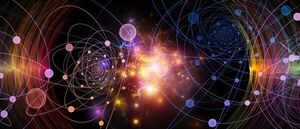
Physicists describe photons’ characteristics inherent to protecting future quantum computing
"Consumers need to be confident that transactions they make online are safe and secure. A main method to protect customer transactions and other information is through encryption, where vital information is encoded with a key using complex mathematical problems that are difficult even for computers to solve. But even that may have a weakness: Encrypted information could be decoded by future quantum computers that would try many keys simultaneously and rapidly find the right one. To prepare for this future possibility, researchers are working to develop codes that cannot be broken by quantum computers. These codes rely on distributing single photons—single particles of light—that share a quantum character solely among the parties that wish to communicate. The new quantum codes require these photons to have the same color, so they are impossible to distinguish from each other, and the resulting devices, networks, and systems form the backbone of a future “quantum internet.” Researchers at the University of Iowa have been studying the properties of photons emitted from solids and are now able to predict how sharp the color of each emitted photon can be." [...]
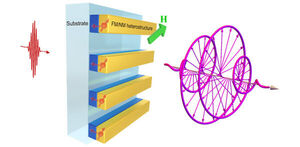
Broadband spintronic-metasurface terahertz emitters with tunable chirality
"Metasurface-tailored spintronic terahertz emitters allow efficient, flexible generation and manipulation of chiral terahertz waves. Terahertz radiation, between infrared and microwave radiation in the electromagnetic spectrum, possesses unique advantages for fundamental studies and practical applications. The ability to generate and manipulate broadband chiral terahertz waves is essential for applications in material imaging, terahertz sensing, and medical diagnosis. It can also open up new possibilities for nonlinear terahertz spectroscopy, as well as coherent control of chiral molecules and magnetic materials, which could eventually enable new drug development and fast data storage. Producing and controlling circularly polarized coherent terahertz waves can be accomplished in a variety of ways. There are three kinds of methods currently in use: (1) direct generation from gas plasmas, by applying external fields or a combined two-color laser scheme; (2) special frequency-conversion techniques in nonlinear crystals and in magnetic and novel topological materials; and (3) implementation of passive optical components." [...]
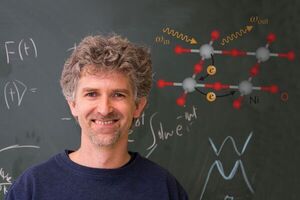
Superconductivity: New tricks for finding better materials
"Even after more than 30 years of research, high-temperature superconductivity is still one of the great unsolved mysteries of materials physics. The exact mechanism that causes certain materials to still conduct electric current without any resistance even at relatively high temperatures is still not fully understood. Two years ago, a new class of promising superconductors was discovered: so-called layered nickelates. For the first time, a research team at TU Wien has now succeeded in determining important parameters of these novel superconductors by comparing theory and experiment. This means that for the first time a theoretical model is now available that can be used to understand the electronic mechanisms of high-temperature superconductivity in these materials. In search of high-temperature superconductors Many superconductors are known today, but most of them are only superconducting at extremely low temperatures, close to absolute zero." [...]

Pioneering new process creates versatile moldable wood
"Structures and vehicles built with sustainable materials are in high demand to meet today’s needs and for future generations. Natural wood already boasts an inherently lower life cycle cost than other materials and is a naturally strong, lightweight, and durable composite material that could offer an attractive alternative to commonly used polymers, metals and alloys, if its properties and functionality could be improved. Previous approaches, such as delignification and densification, have been tried and so far failed to provide the same formability offered by metals and plastics. That’s why the development of an innovative new technique, using a rapid ‘water-shock’ process, able to create strong and moldable wood is so exciting and made the cover story of Science. After extracting the lignin – a polymer which binds the cell walls inside wood that give it strength – which softens it, and then closing the fibres via evaporation, the research team, involving the University of Bristol, re-swelled the wood by "shocking" it with water. "The rapid water-shock process forms a distinct partially open, wrinkled cell wall structure that provides space for compression as well as the ability to support high strain, allowing the material to be easily folded and molded," said lead author Professor Liangbig Hu, Director of the Center of Materials Innovation, University of Maryland." [...]

Stretchy, bendy, flexible LEDs
"They’re also cheaper, faster and fabricated with an inkjet printer Sure, you could attach two screens with a hinge and call a cell phone “foldable,” but what if you could roll it up and put it in your wallet? Or stretch it around your wrist to wear it as a watch? The next step in digital displays being developed at the McKelvey School of Engineering at Washington University in St. Louis could make that a reality. First, there were light-emitting diodes, or LEDs. Then, organic LEDs, or OLEDs. Now, researchers in the lab of Chuan Wang, assistant professor in the Preston M. Green Department of Electrical & Systems Engineering, have developed a new material that has the best of both technologies and a novel way to fabricate it — using an inkjet printer." [...]

Atomic-Scale Images for Energy Science
"They say a picture is worth a thousand words. But that’s only true if it’s not blurry, or grainy, or the subject’s head is not out of the frame. These kind of epic fails plague even experienced photographers. The same is true for experienced scientists acquiring images from precision instruments. Libor Kovarik is a material scientist and prolific inventor at Pacific Northwest National Laboratory (PNNL). But even he has tasted failure when magnetic fields, vibrations, or temperature fluctuations caused distorted images." [...]
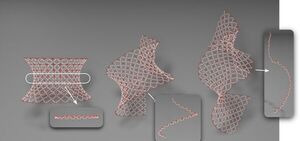
Shape-shifting materials with infinite possibilities
"Researchers from the Harvard John A. Paulson School of Engineering and Applied Sciences (SEAS) have developed a shape-shifting material that can take and hold any possible shape, paving the way for a new type of multifunctional material that could be used in a range of applications, from robotics and biotechnology to architecture. The research is published in the Proceedings of the National Academy of Sciences. “Today’s shape-shifting materials and structures can only transition between a few stable configurations but we have shown how to create structural materials that have an arbitrary range of shape-morphing capabilities,” said L Mahadevan, the Lola England de Valpine Professor of Applied Mathematics, of Organismic and Evolutionary Biology, and of Physics and senior author of the paper. “These structures allow for independent control of the geometry and mechanics, laying the foundation for engineering functional shapes using a new type of morphable unit cell.” One of the biggest challenges in designing shape-morphing materials is balancing the seemingly contradictory needs of conformability and rigidity. Conformability enables transformation to new shapes but if it's too conformal, it can’t stably maintain the shapes. Rigidity helps lock the material into place but if it's too rigid, it can’t take on new shapes." [...]
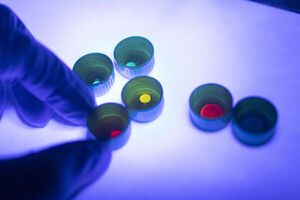
UQ research unlocks the technology to produce unbreakable screens
"Cracked phone screens could become a thing of the past thanks to breakthrough research conducted at The University of Queensland. The global team of researchers, led by UQ’s Dr Jingwei Hou, Professor Lianzhou Wang and Professor Vicki Chen, have unlocked the technology to produce next-generation composite glass for lighting LEDs and smartphone, television and computer screens. The findings will enable the manufacture of glass screens that are not only unbreakable but also deliver crystal clear image quality. Dr Hou said the discovery was a huge step forward in perovskite nanocrystal technology as previously, researchers were only able to produce this technology in the bone-dry atmosphere of a laboratory setting. “The emitting materials are made from nanocrystals, called lead-halide perovskites,” he said. “They can harvest sunlight and concert it into renewable electricity - playing a vital role in low-cost and high-efficiency new generation solar cells and many promising applications like lighting." [...]

High-Speed Laser Writing Method Could Pack 500 Terabytes of Data into CD-Sized Glass Disc
"Researchers have developed a fast and energy-efficient laser-writing method for producing high-density nanostructures in silica glass. These tiny structures can be used for long-term five-dimensional (5D) optical data storage that is more than 10,000 times denser than Blue-Ray optical disc storage technology. “Individuals and organizations are generating ever-larger datasets, creating the desperate need for more efficient forms of data storage with a high capacity, low energy consumption and long lifetime,” said doctoral researcher Yuhao Lei from the University of Southampton in the UK. “While cloud-based systems are designed more for temporary data, we believe that 5D data storage in glass could be useful for longer-term data storage for national archives, museums, libraries or private organizations.” In Optica, Optica Publishing Group’s journal for high-impact research, Lei and colleagues describe their new method for writing data that encompasses two optical dimensions plus three spatial dimensions. The new approach can write at speeds of 1,000,000 voxels per second, which is equivalent to recording about 230 kilobytes of data (more than 100 pages of text) per second. “The physical mechanism we use is generic,” said Lei." [...]
Documentação
A documentação é parte essencial do processo de aprendizagem e a Internet além de artigos interessantes de explorar também tem alguma documentação em formato PDF interessante de ler. Todos os links aqui apresentados são para conteúdo disponibilizado livremente pelo editor do livro.
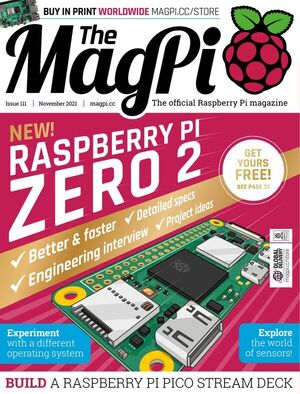
The MagPi 111
"If you have a print subscription to The MagPi magazine then a brand new Raspberry Zero 2 W computer is in the post! Not subscribed? Don’t worry - it’s not too late to get your free Zero 2 W computer. Subscribe to The MagPi magazine for 12-months now for your free Zero 2 W - Introducing Raspberry Pi Zero 2 W. The new quad-core 1GHz CPU is up to five times as fast as the original Zero and is compatible with all current Zero projects and kits. - Zero 2 W specifications and hardware guide. Every major component is outlined in full detail." [...]
Projetos Maker
Diversos Projetos interessantes.

TRICORDUINO - 3.0 True Scientific Tricorder
"This project describes the development of a multi-mode scanner platform, which can be described as a Scientific Tricorder. A few years ago, after taking my first contacts with embedded electronics, I decided it would be time to try building a Tricorder. My first option was to use arduino. I'm definitely not an expert, so I designed my project based much more on concepts like; Sketch simplicity, ease of assembly and possibility of miniaturization. I am aware that an expert can design something much more efficiently. Initially, I built Tricorduino 1.0 and 2.0, using arduino mega and some sensors." [...]

APAN - Arduino Privacy Automatic Navigator
"What to confuse your ISP and have some privacy? Install APAN in your private network! Do you know that while you are browsing the internet, all your internet traffica may be recorded? Despite the privacy precautions you take, there is someone who can see everything you do online such as your Internet Service Provider. When it comes to online privacy, there are a lot of steps you can take to clean up your browsing history and prevent sites from tracking you. While these solutions may keep advertisers and anyone using your computer from viewing your browsing history, your ISP can still watch your every move." [...]

ESP32_Desktop_Clock
"This ESP32 internet of things desktop clock is a project created for my home. School has started and fall is coming so every morning my kids ask me what they should wear. This clock is normally very, very dim and shows the time, co2 value, room temperature and humidity in a dark orange color. When you move your hand a foot or so in front, the time fades away to a screen showing the days low temperature, high and what the weather conditions will be. Time is updated every few minutes over wifi from an NTP server, local weather data is updated from Openweather with various sensors on the front. Hardware on this board: - ESP32 Pico D4 processor - temperature/humidity sensor (HDC1080DMBT) - laser range sensor (VL53L0CXV0DH) - CO2/TVOC (SGP-30-2.5K) - ambient light sensor (BH1750FVI) - 135x240 TFT LCD (ER-TFT1.14-1) - 3.3V LDO (NCP1117LPST33T3G) - 1.8V LDO (RT9193-18GB) - Neopixel LED - USB interface (CP2104N) - USB-C Connector - QwiiC i2c Connector - Buzzer" [...]

IR remote control Arduino based electric board
"Arduino based electric board controlling system, Can be controlled using any universal IR remote. good IR receiving range and support 12 CH. Hello guys, today we are going to make a remote-control universal switch on/off 3 channel circuit. Though this we can control any load like: fan, light, bulb, TV, charger or any other electrical appliances under 1000watts. This circuit can be controlled using any IR (infrared) remote, it may be of Tv, A.C or any universal remote. We will build this circuit using very less and readily available components." [...]

DIY Halloween Pumpkin Using Arduino
"How to make your own LED Pumpkin using Arduino and some simple electronic components for this Halloween? It’s time to get ready for Halloween! We’re going to be doing a lot of DIY stuff this month, so stay tuned. Today we are going to show you how you can make your own LED pumpkin with just a few materials. The best part? You don’t need any fancy tools or skills." [...]

DIY WS2812 Analog Style Arduino Ring Clock
"This time I will show you how to build a nice-looking ring clock. The clock uses a WS2812 ring containing 60 Leds, (4 Quarter circle neopixels x 15 Leds) and it is ideal for this purpose. This is an analog-style digital clock with multiple display states, a 24-hour alarm, a count down alarm, multiple alarm display states, and a demo mode. Hours, minutes, and seconds are represented by a different color of the corresponding LED. The ring holder is made with a 3D printer and you can download the.stl file below. The physical housing for the desktop clock is based on the dimensions of the neopixel ring." [...]
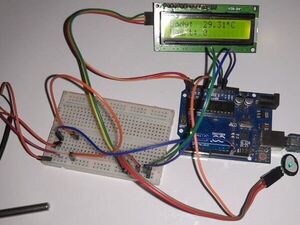
Health Monitoring System Using Arduino UNO with LCDI2C
"A Monitoring system that will detect the person's Heart rate and Body temperature and display the values to the LCD. " [...]
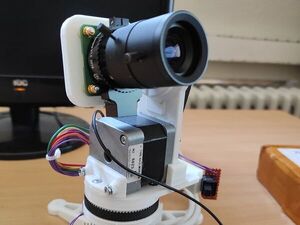
Raspberry Pi Motorized Camera Tripod
"Raspberry Pi Camera V2.1 and Pi HQ Camera motorized holder, Laser pointer" [...]

Arduino Sound meter
"In this video we make a sound level meter using an Ardiuino Una, a 1.3" OLED display and a microphone breakout board. Arduino Sound Level MeterIn this video we make a sound level meter using an Ardiuino Una, a 1.3" OLED display and a microphone breakout board. The sketch samples the AC waveform of the microphone for 50ms and records the minimum and maximum values. This gives us the peak-to-peak value for the sound.Then we convert this value to a calibrated decibel numeric value and then map that value to create a bar graph. " [...]
Secção Videos
Videos interessantes.
That's all Folks!



